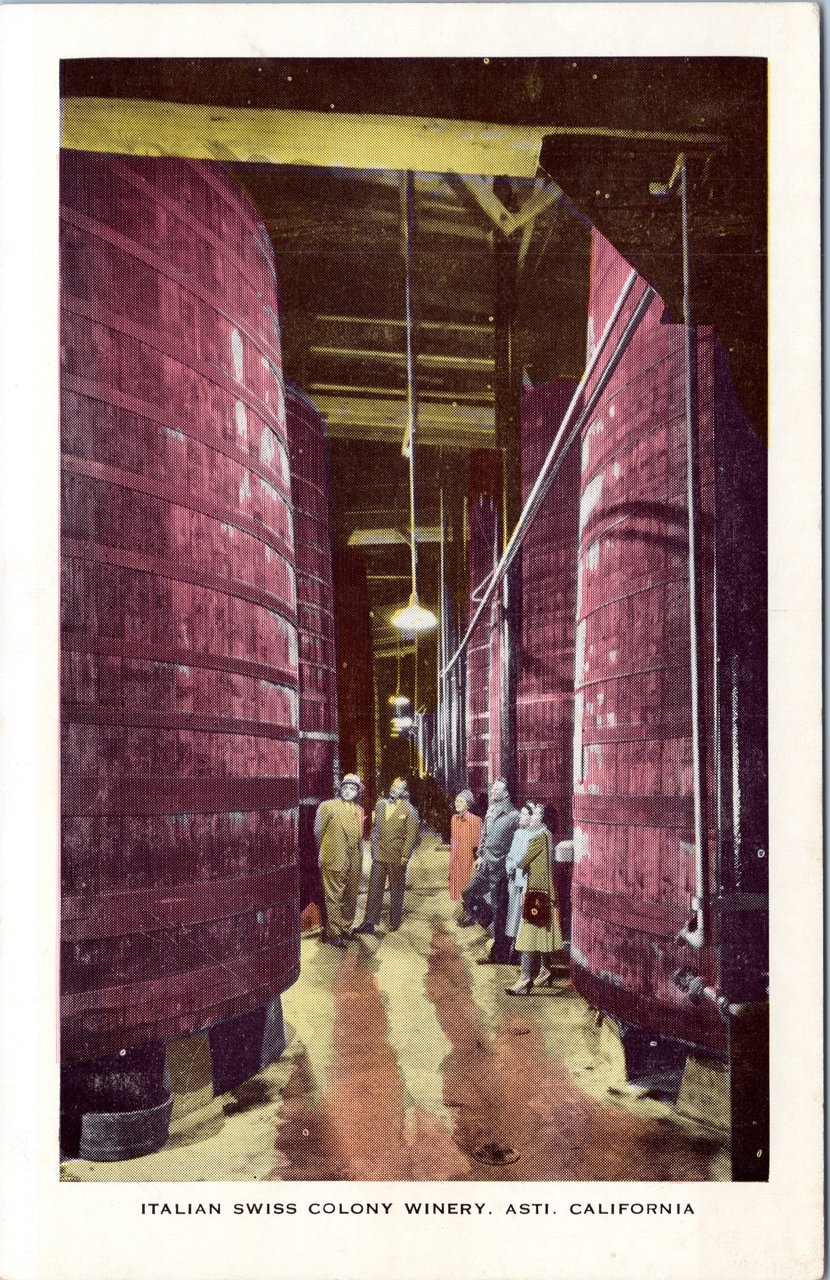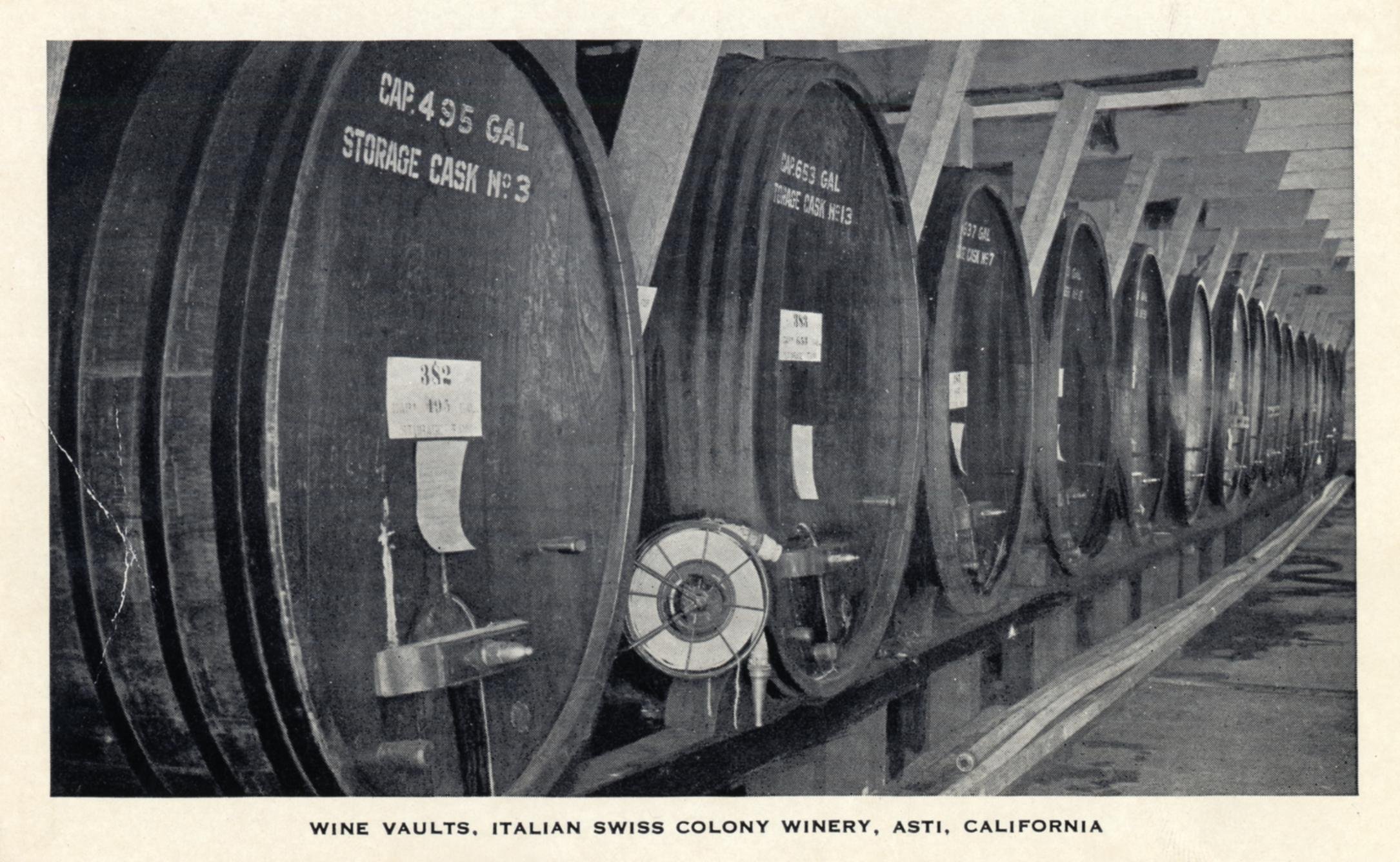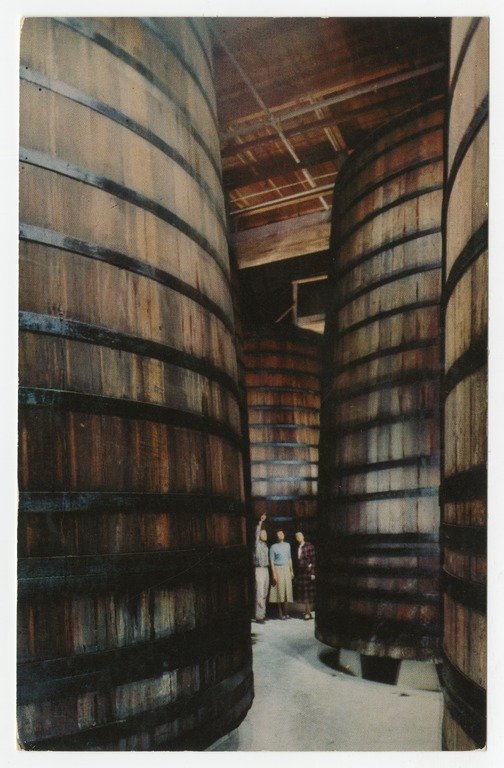Redwood wine barrels: a forgotten california tradition
If you’re in the habit of browsing American wine trade publications from the turn of the century (a thing that totally normal and healthy people do), you’ll come across a lot of ads for redwood barrels. In California, redwood was once widely used to store, transport, ferment, and age wine. While small-format barrels weren’t common—because redwood doesn’t bend as easily as other woods, such as oak—larger redwood barrels and upright tanks were sometimes used. Redwood was cheap and easy to obtain, so redwood barrel manufacturers flourished.
A 1905 feature on wine tanks from The Barrel and Box, a trade publication
Arpad Harazthy, an influential Hungarian-American winemaker, claimed to be the first to have used redwood vessels. He wrote that, in California, “the redwood abounds, is easily worked, and durable,” noting that the price per gallon of redwood casks was about three cents. In an article for Harper’s in 1864, he described a process he’d developed of treating the wood with steam to remove every last drop of pitch (to ensure that none of that delicious Pine-Sol flavor made its way into the wines).
An 1915 ad for redwood storage tanks from Pacific Tank & Pipe Co.
Did wines aged in new redwood taste any different? Haraszthy didn’t think so. In the article, he writes about conducting a test that involved filling a redwood barrel and an oak barrel with the same wine and leaving it for an unspecified number of years. When tasted, the wine in the redwood barrel “gave not the slightest taste” of redwood. (It should be noted that Haraszthy had a large financial interest in that assertion.)




Another early California winery that used redwood tanks was the Italian Swiss Colony. Founded in 1881 in Sonoma County to provide work to Italian immigrants, this winery became a major tourist draw in the mid-20th century when it began churning out cheap, sweet, mass market wines and welcoming thousands of road trippers into its Alpine-themed visitor center. You’ll find a lot of postcards from various decades featuring the Colony’s giant redwood tanks.
Hilariously, the property also featured a wine barrel-shaped church. For the curious: yes, the church was also made of redwood. In fact, it was constructed from old barrel staves, and it still exists (though it looks a little less barrel-y in its current form).
If you’re under 50 and the name of this winery is familiar to you, you either (a) are into Californian wine history and recognize it as the original name of what is now Asti Winery, or (b) remember it from a line in the sleepover scene in Grease: “Italian Swiss Colony. Wow, it’s imported!”
Do any wineries use redwood tanks today? As far as I can determine, A. Nonini Winery in Fresno is the only winery in existence still using redwood tanks—in this case, as fermentation vessels. According to their web site, theirs date back to 1936. (Their wines are aged in conventional oak barrels, though, not redwood.) Given the age of the tanks, it’s unlikely that you’ll taste redwood in any of these wines.
Redwood tanks may have worked for the early days of wine, but the stainless steel tanks that became popular in the 1950s are less likely to leak and make temperature control much easier. And redwood—many species of which are endangered—isn’t the cheap, plentiful wood it once was. So you’re probably not going to see any new redwood wine tanks, though the old ones seem to be finding new life as stylish reclaimed wood.
Further reading
A History of Wine in America, Thomas Pinney, 1989
The Makers of American Wine, Thomas Pinney, 2012
“Wine-Making in California”, Arpad Haraszthy, 1864


